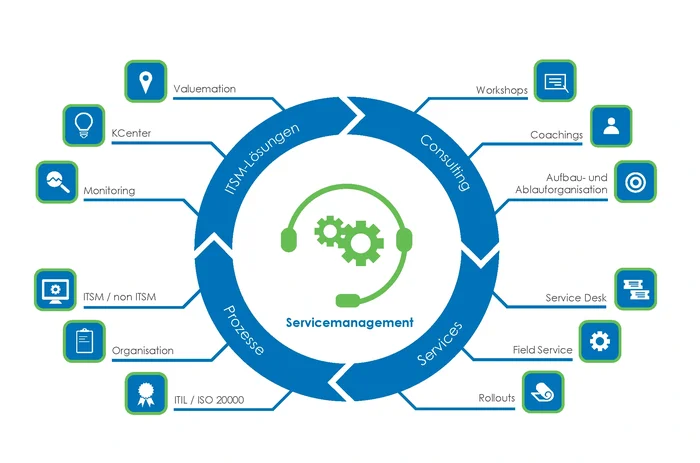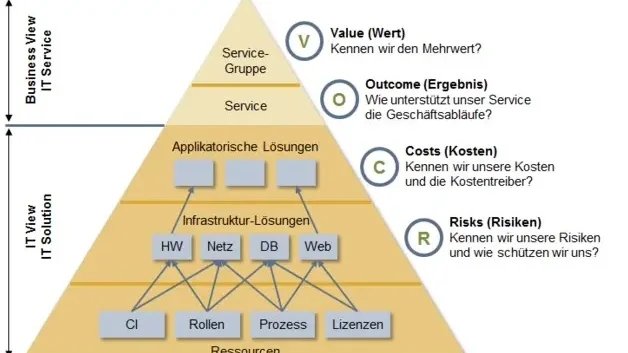The provision of optimal IT services requires appropriate service behavior on the part of the IT organization, or even better, a practiced service culture ahead. The behavior, the personal attitude and thePrevailing work culturewithin an IT organization are the most critical factors for the successful implementation of service management processes according to ITIL.
In the area of leadership behavior, setting an example, promoting and consistently demanding the jointly defined service management principles is the key factor par excellence. A constructive culture of debate is just as important as the active support of the process owners by the responsible service manager.
Behavior, attitude and work culture are the ABCs of IT (Attitude, Behavior, Culture). Correcting them is essential if a successful service management implementation is to be possible. Harmful behaviors are:
The consequences of such misconduct can be
IT management must eliminate the causes of misconduct at an early stage and in a targeted manner in order to enable the change to a business-oriented service provider in accordance with ITIL®. We at EDV-Solutions and our employees and specialists exemplify this.

The aim of service management is to coordinate specific, technical and organizational resources in order to deliver added value to customers in the form of services. Service management according to ITIL is a framework and as such includes the entirety of necessary and specialized organizational capabilities that are available to generate added value for customers in the form of services. This includes service strategy, service design, service transition, service operation and the continuous improvement of processes and services.
The separation of production, distribution and use of an IT application is outdated. Total cost of ownership analyses show a significant shift in costs from the creation to the operation of IT.
IT Service Management is the management framework that plans, monitors and controls the quality and quantity of the services delivered. The control variables are derived from the objectives of business process and customer orientation as well as cost optimization.
The three main objectives of service management are:
This process definition and the main objectives associated with it lead to a fundamental change in philosophy: the IT user becomes an IT service customer!
This definition puts it in a nutshell: the customer wants to and should concentrate on their business activities and not have to worry about the details of IT service provision. They want to be able to rely on their service provider and are prepared to pay a reasonable price. The service provider must deal with the risks and costs of service production and provision. A service is not simply a product. In the past, IT was defined in terms of products, which was usually understood as hardware, software, PCs and so on. However, as business becomes more dependent on IT, this view is no longer sufficient. The business wants a partner who takes care of these products and offers functioning IT as a service. The main differences between products and services can be illustrated as follows:
People, processes and technologies work together in the provision of services. The value of a service is perceived by the customer himself through the sustainable support in business processing.

The architecture is based on a service lifecycle. "Service Strategy" defines the axis around which the lifecycle revolves. This is where the guidelines and objectives are specified, which are implemented as progressive phases from planning to change to operation with Service Design, Service Transition and Service Operation. Continual Service Improvement corresponds to continuous learning and improvement and helps to position and prioritize improvement programs and projects based on the strategic goals.
In order for this life cycle to influence activities in a customer and business-oriented way, it is very important to organize the various pieces of information. Without a suitable structure, the valuable knowledge is just a collection of observations and practices - or worse still, competing objectives could be derived from it. The service lifecycle forms an organizational framework and determines the pattern of behavior to be followed. As a model for the provision of sustainably good services, it expands the service management approach and helps to better understand its structures and interrelationships.
One Function is an organizational unit that specializes in the performance of specific tasks and is responsible for the final result. Functions are independent departments with skills and resources that are necessary for the provision of services. For example, network or database administration with its own specific procedures and accumulated knowledge.
In contrast to a function, a process is a structured combination of activities that, triggered by a defined input, ensures the desired result - the output. Processes lead to goal-oriented change and require feedback to improve their own performance. In order to provide the sometimes very complex services, IT must be divided into individual organizational units, the functions, which can perform specific functions under their own responsibility. Processes, the actual basis of effective organizations, are required to ensure that the overarching overall goal - the delivery of business benefits through services - can be achieved.
Characteristics of processes
These triggers must be taken into account in the design of the processes so that control over the process and its outcome can be guaranteed in terms of effectiveness, effort and quality.
A control is defined as those guidelines, procedures, practices and organizational structures that are intended to ensure that the company's objectives are achieved and that undesirable events can be prevented or corrected. Controls are fundamental building blocks of an organization's governance structure.